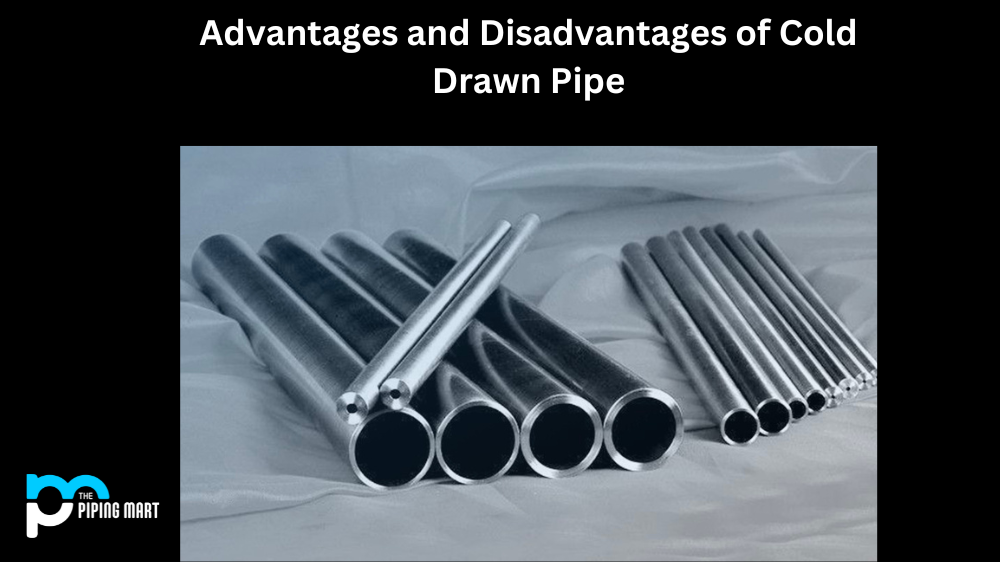The cold-drawn pipe is a steel pipe formed through a cold-drawn process. It’s used in various applications, such as plumbing, automotive, marine, and industrial. But what are the advantages and disadvantages of using cold-drawn pipes? Let’s explore the pros and cons.
5 Advantages of Cold Drawn Pipe
One of the main advantages of using a cold-drawn pipe is its strength and durability. Each section of cold-drawn pipe is made from high-quality steel that has been specially treated to be stronger than traditional steel pipes. This makes it ideal for use in environments where other steel pipes would not stand up to wear and tear. Additionally, a cold-drawn pipe cannot corrode easily and withstand extreme weather conditions.
Another advantage of using a cold-drawn pipe is its cost-effectiveness. The production process for this type of steel pipe requires less energy than other methods, making it more affordable overall. Additionally, the tighter tolerances provided by cold drawing result in greater accuracy and fewer mistakes during fabrication, which also leads to savings on labor costs.
More Durable
Cold-drawn pipes are more durable than other types because they are made from more robust materials. Cold-drawn pipes are typically made from high-quality steel or metals that withstand high temperatures and pressures. Additionally, cold-drawn pipes are often treated with a coating that helps to protect them from corrosion
More Precise Sizes
Cold-drawn pipes are also more precise in terms of their sizes than other types of pipes. This is because the manufacturing process for cold-drawn pipes involves measuring the metal used for the pipe very precisely before forming it into a pipe. This results in a pipe with much tighter tolerances than a pipe made using another manufacturing process.
Smoother Surface Finish
Another advantage of cold-drawn pipes is that they have a smoother surface finish than other types of pipes. This is because the manufacturing process for cold-drawn pipes removes any imperfections in the metal that could cause the finished pipe to have a rough surface finish. As a result, cold-drawn pipes have a much smoother surface finish than other types of pipes.
Greater Strength
Cold-drawn pipes also have greater strength than other types of pipes because of the way they are manufactured. The manufacturing process for cold-drawn pipes hardens the metal, increasing its strength. Additionally, the manufacturing process for cold-drawn pipes creates a microstructure that is more resistant to fracture than the microstructure of other types of pipes.
Increased Ductility
Another advantage of cold-drawn pipes is increased ductility compared to other types of pipes. Ductility measures a material’s ability to deform under stress without breaking. Cold-drawn pipes can deform more under pressure than different types of pipes because of their microstructure and the way they are manufactured.
5 Disadvantages of Cold-Drawn Pipe
One potential disadvantage when using a cold-drawn pipe is its need for more flexibility than traditional steel pipes. Since each section is made from one continuous piece of metal, it cannot be bent or manipulated into tight spaces like other types of pipes can be. This limits its application in certain situations where more flexibility might be needed for installation or repair.
Also, since each section must be cut individually from a continuous piece of metal during the production process, there can sometimes be inconsistencies between sections due to small imperfections in the original pieces used for production. This could lead to problems if these imperfections are not considered when installing or repairing the cold-drawn pipe sections.
More expensive
The cold-drawn pipe is more expensive than other types because it is a more labor-intensive process.
Limited sizes
The cold-drawn pipe is typically only available in small sizes due to the manufacturing process.
Limited shapes
The cold-drawn pipe is also typically only available in certain shapes due to the manufacturing process.
More brittle
The cold-drawn pipe is more brittle than other types and is more likely to break or crack under stress.
Requires special equipment
Cold-drawn pipe requires special equipment that not all manufacturers have, making it difficult to find someone to produce it.
Conclusion:
While some disadvantages associated with using cold-drawn pipe—such as its lack of flexibility—the overall benefits far outweigh any potential drawbacks regarding reliability and performance in demanding environments such as plumbing installations or automotive repairs. Its strength and durability make it an ideal choice for many applications across automotive, marine, industrial, and plumbing projects. Its cost-effectiveness makes it even more attractive! Whether you choose to use it will depend on your specific needs, but you should keep this option on your list when assessing materials for your upcoming project! Intended Audience: Plumbers & Homeowners looking at options for their upcoming project

Meet Bhavesh, a seasoned blogger with a wealth of knowledge and experience. From metal products manufacturing to retail, Bhavesh has a diverse background in various industries and is dedicated to sharing his insights and expertise with readers.




